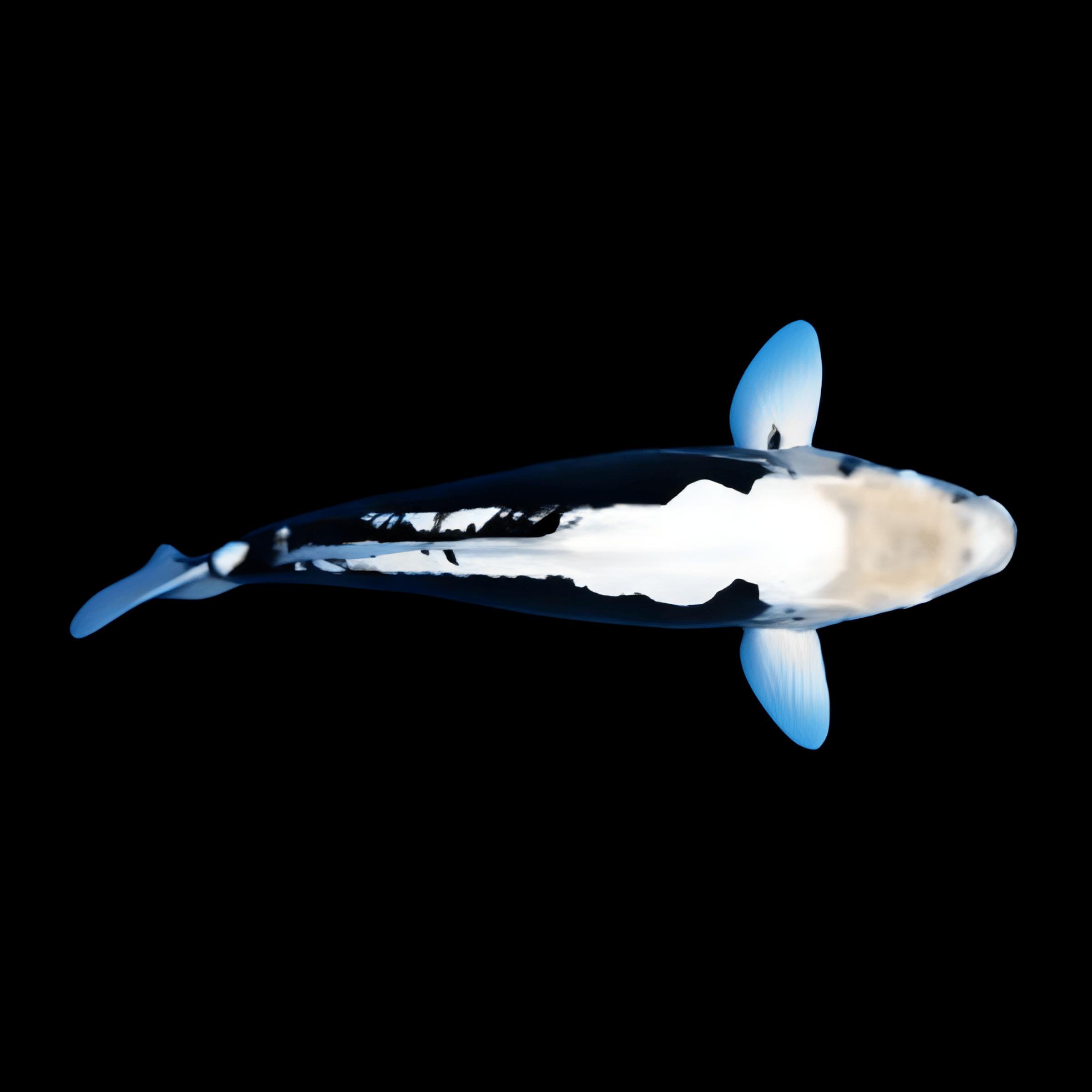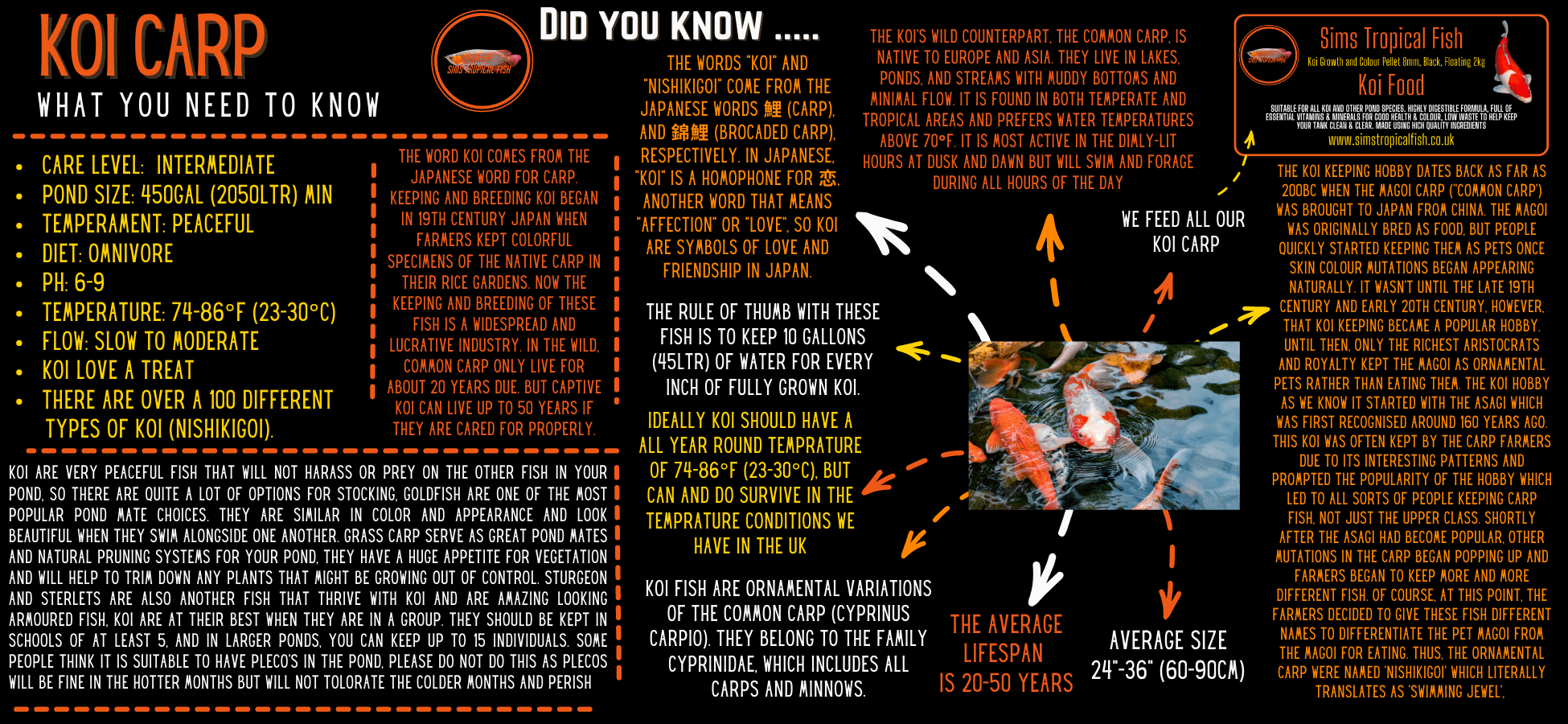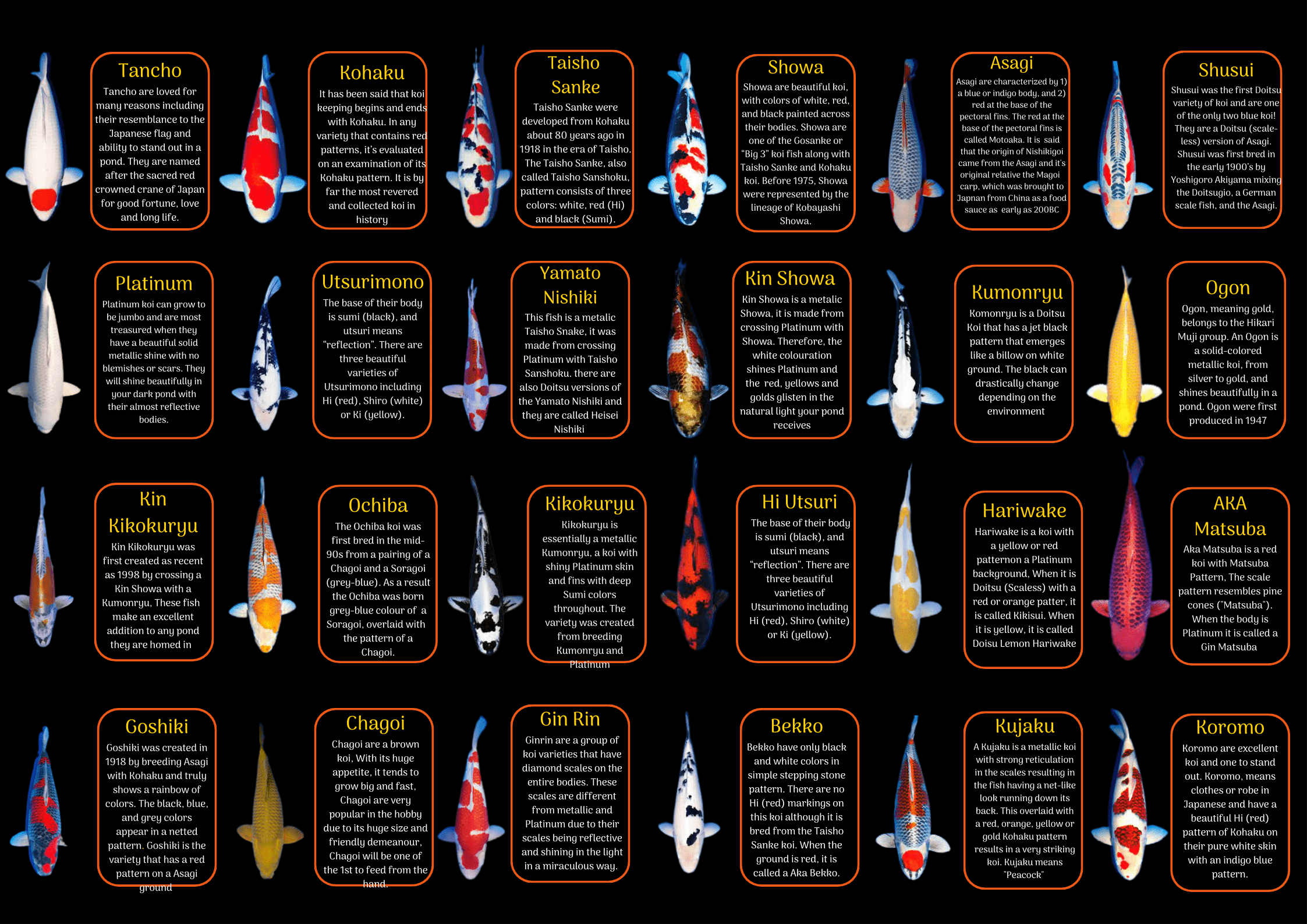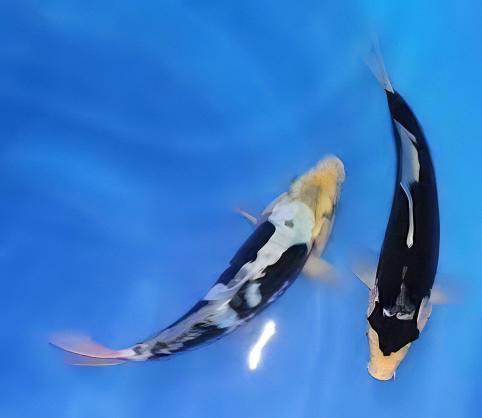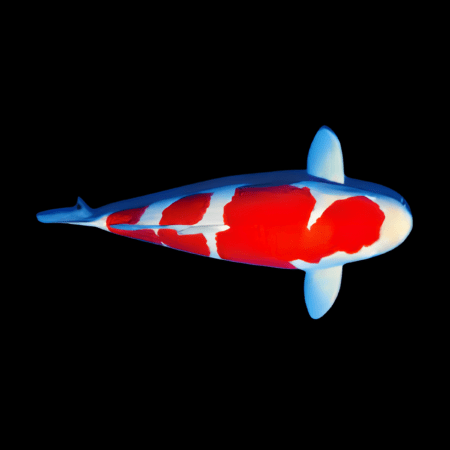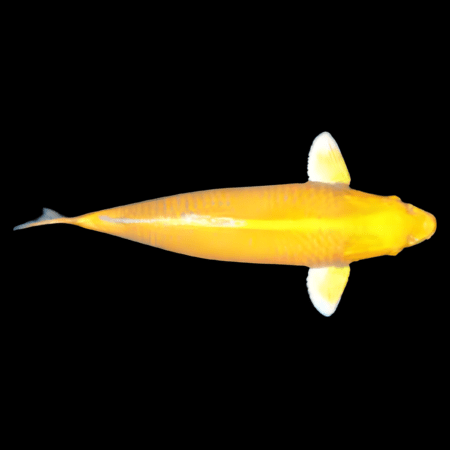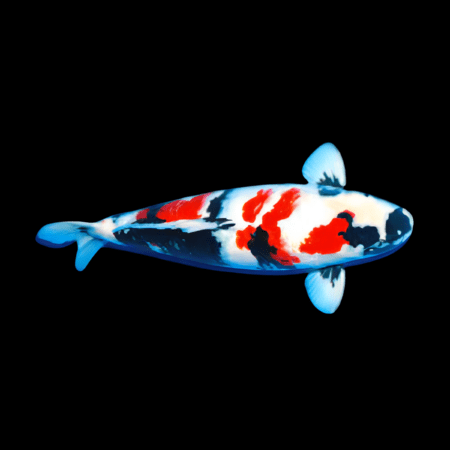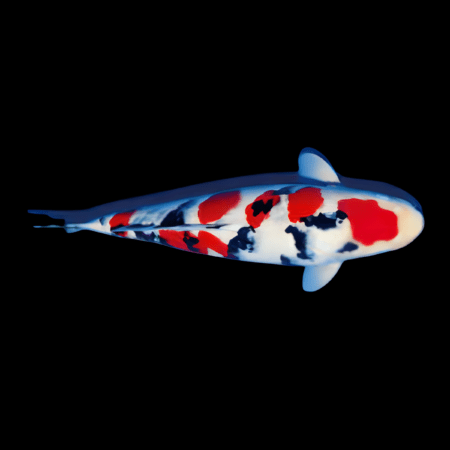Description
Kumonryu Grade A Koi Carp Cyprinus Carpio
The Kumonryu (COME-on-REE-yoo) koi comes from a long line of koi that began with a darker coloured variant of the wild Magoi (mah-GOY) koi, which was called a Tetsu Magoi (tet-SOO mah-GOY). This Tetsu Magoi is the ancestor of many darker varieties of koi as many generations of crossbreeding within the Tetsu Magoi variety resulted in the Karasu (KAH-rah-soo) koi. This koi was nicknamed the ’Crow Koi’ as it is a completely pure black koi said to bring good luck to anyone who has one in their pond.
From the Karasu koi, some offspring were born with white tips on their fins, and these were bred further to develop the white areas more and more. Eventually, this led to the Yatsushiro (yah-TSOO-shee-ro) koi which was a black koi with a white head and white fins. Finally, the first Kumonryu koi was born from a Yatsushiro koi paired with a Shusui koi (a Doitsu koi with a blue body and red markings on the side of the body).
Essentially, this first Kumonryu koi, and any subsequent Kumonryu, are Doitsu versions of the Yatsushiro koi. A Doitsu koi is a koi that has no scales except for a line of large scales along the lateral line of the fish (where the dorsal fin runs) and one line along either side of the dorsal fin. So, a Kumonryu koi is a scaleless koi with a shiro (white) base colour and a sumi (black) pattern on top.
Some koi keepers might ask, “so, what is the difference between a Kumonryu and a Doitsu Shiro Utsuri?” A Doitsu Shiro Utsuri is also a black and white scaleless fish but if you look carefully, you can see some differences. As mentioned above, one of the parent varieties of the Kumonryu koi is the Shusui koi which has a blue base colour to the body of the fish. Therefore, if you look closely at the white of the fish, a Kumonryu will have a slight blue tinge to the white while a Doitsu Shiro Utsuri will have a pure snow-white base colour. In addition, the sumi pattern of the fish will appear to run down the length of the koi on a Kumonryu while, on a Doitsu Shiro Utsuri, the sumi pattern will appear to wrap around the body of the fish. These differences can be very hard to spot as the two fish are very similar indeed!
The most interesting thing about this koi and what makes it so unique is its colour-changing abilities. The Kumonryu koi changes its patterns quicker and more often than any other variety of koi. This instability in the pattern is what originally gave Kumonryu its name which literally translates as ‘Nine Crested Dragon’ and refers to a traditional Japanese legend where a dragon called Ryu transforms into a cloud racing across the sky.
Over a period of time, a Kumonryu can change between solid black, solid white and everything in between. It is not yet certain exactly what causes such drastic colour changes but contributing factors can include water quality, temperature, changes in pH, diet, age, stress, and many others. The rate of change can also vary massively between different Kumonryu koi with some changing patterns so slowly that they may appear to be stable at times, and others changing pattern entirely within a few weeks!
